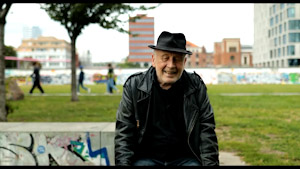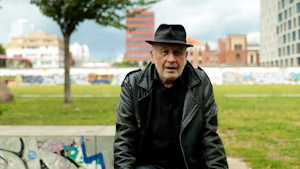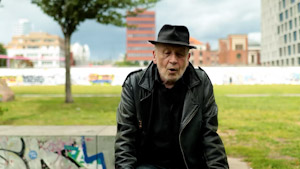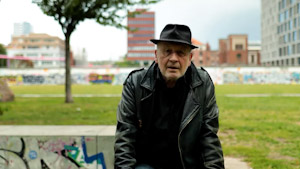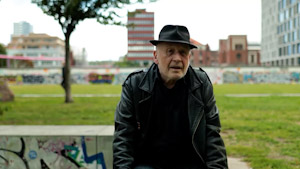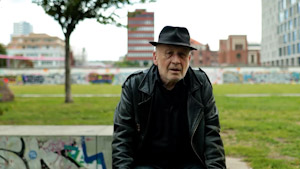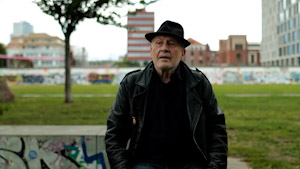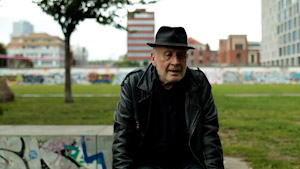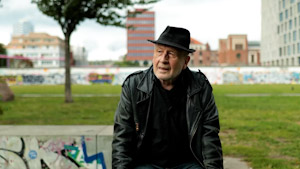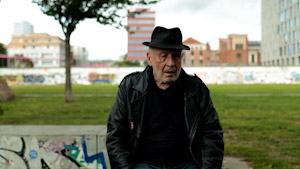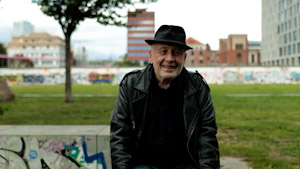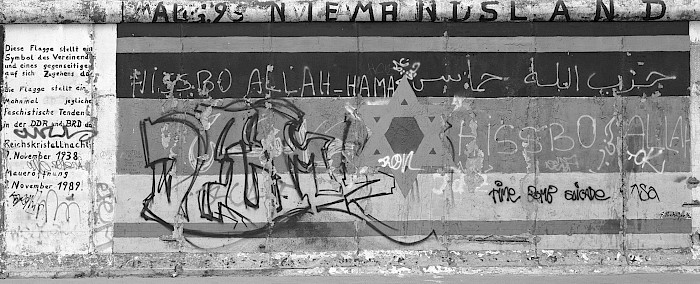“The [border soldiers] thought, here come some crazy people with empty buckets and want to cross from East to West and haven’t even got any papers on them.”
Günther Schaefer trained as a photographer and offset printer in Frankfurt am Main and worked as a commercial photographer in Germany and the United States. He is now known for his art photography. He moved to Berlin in 1989 and lived there until his death in December 2023. His work “Vaterland” (Fatherland) was one of the first to be painted in the East Side Gallery.
Günther Schaefer in the interview
“There was something disconcerting about it, because these people had suddenly become friendly overnight, they didn’t have any machine guns anymore, no Kalashnikovs, and had started grinning overnight. And there was something absurd, dishonest, about that.”
Günther Schaefer’s Wall painting “Vaterland” (Fatherland) marked both the 50th anniversary of the night of pogroms on 9 November 1938 and the fall of the Wall in 1989. The painting has been often defaced with politically motivated and antisemitic slogans and Schaefer has cleaned and restored it over 60 times. Later he added the words “Time Bomb” to commemorate the victims of racist attacks in post-unification Germany. He integrated the Palestinian flag for a time in 2004 to take a stand against violence in the Middle East. Israeli artist Varda Carmeli added the text on the left.
Schaefer was born in eastern Bavaria (West Germany), close to the border with Thuringia (East Germany). In 1989 he was living in New York. When he heard that the Wall was open, he left for Berlin, where he still lives today. He gained international renown for his black-and-white photographs of the fall of the Wall and his long-term photographic projects. In 1996 Schaefer was a founding member of the artists’ intiative Künstlerinitiative East Side Gallery e.V.










































































































